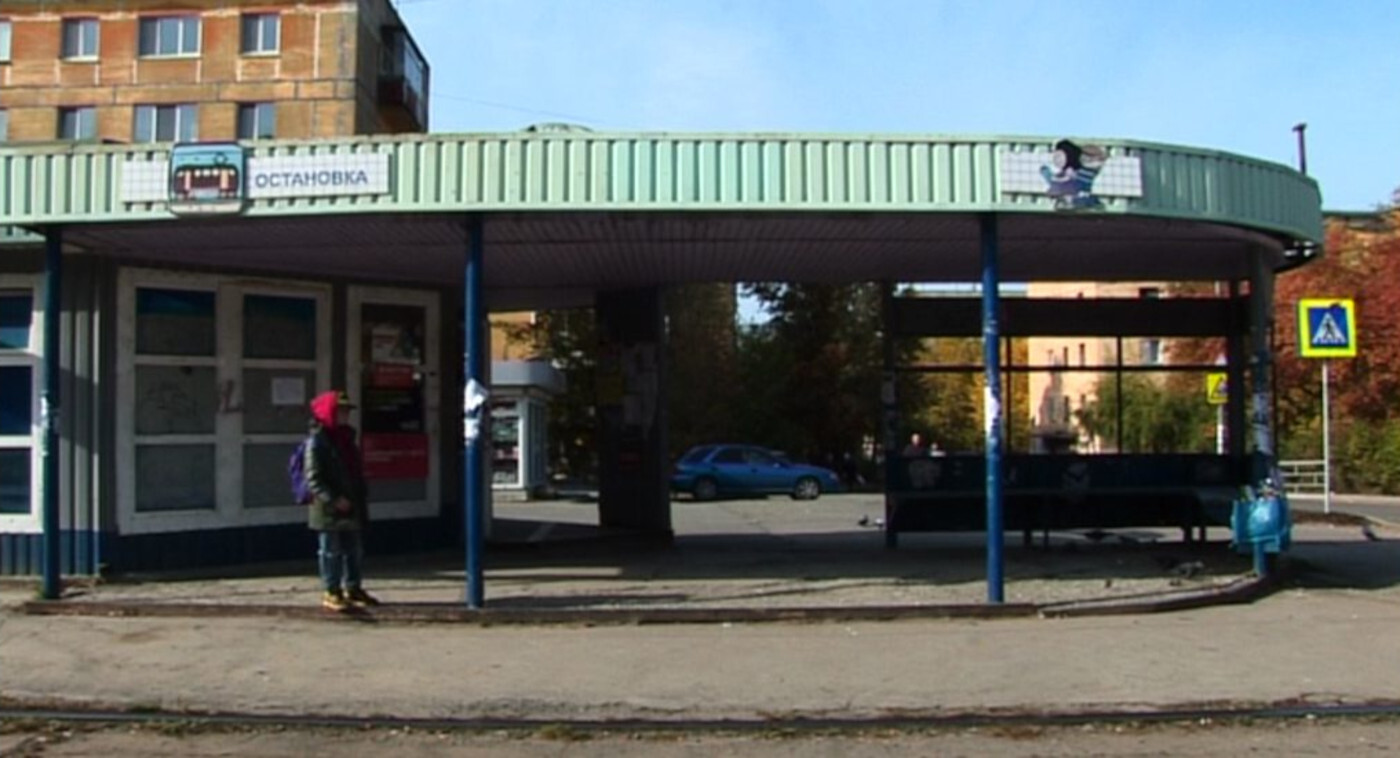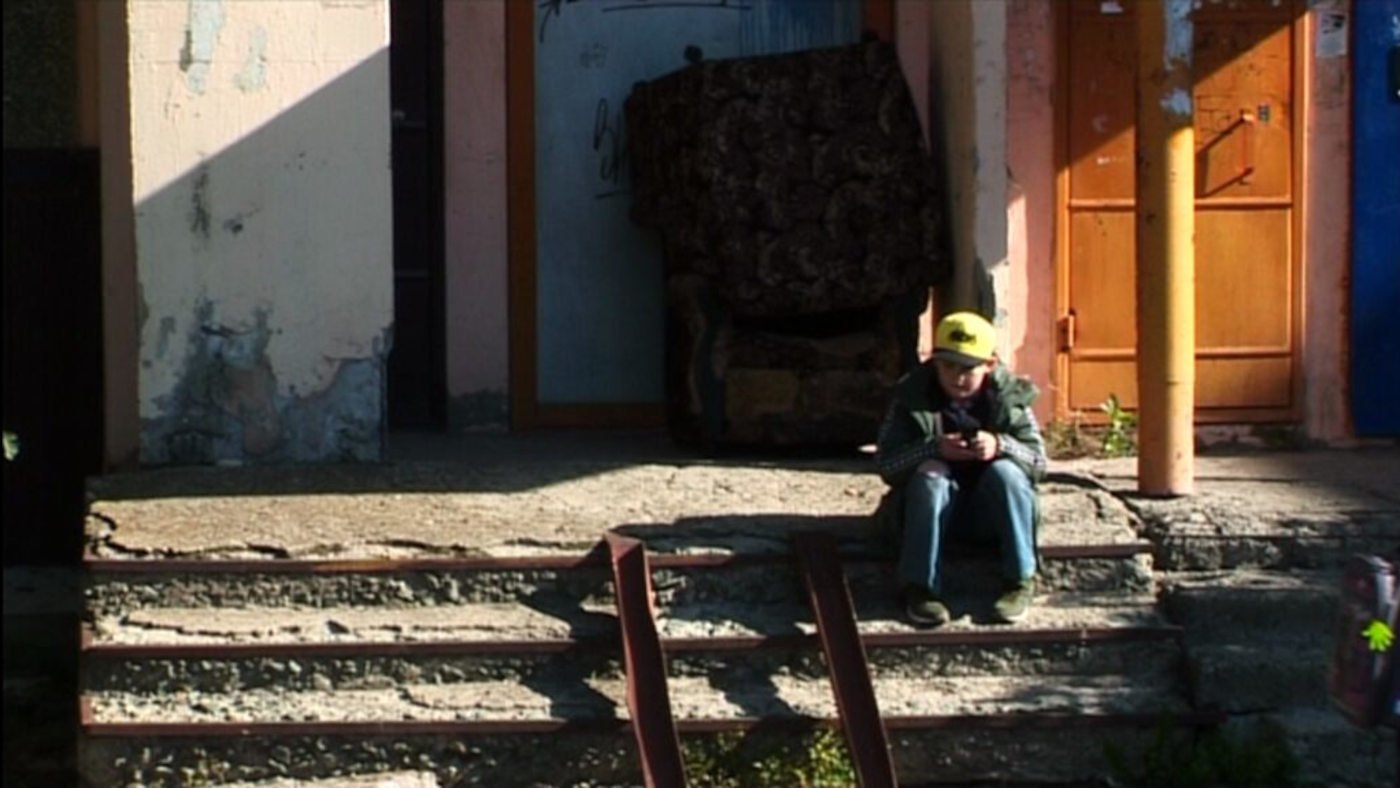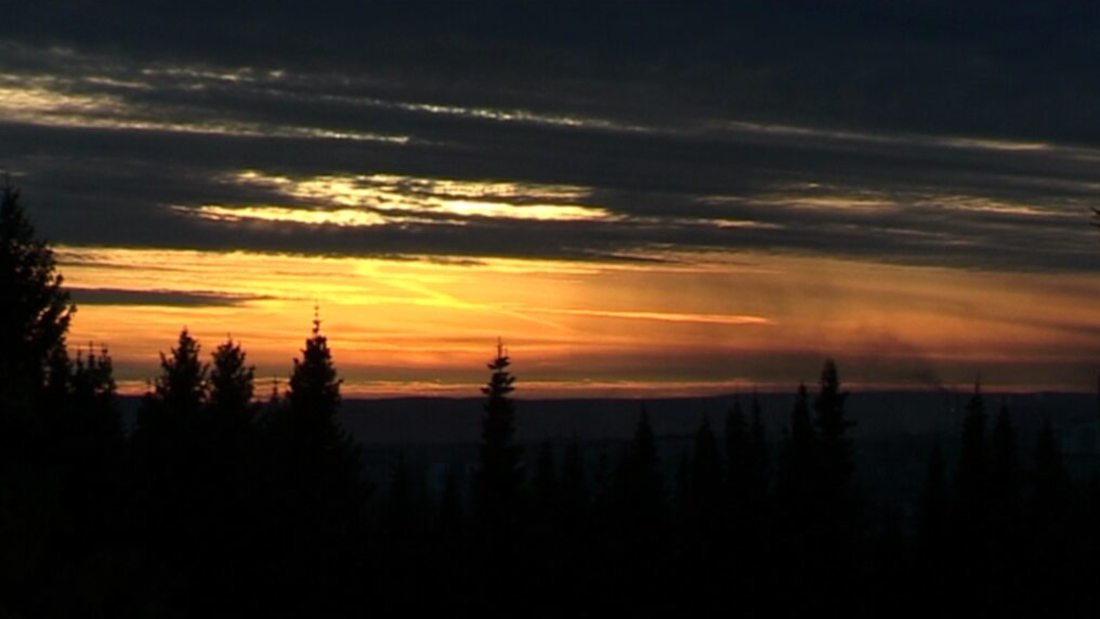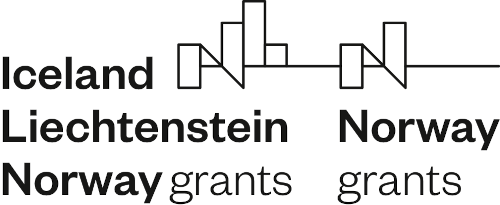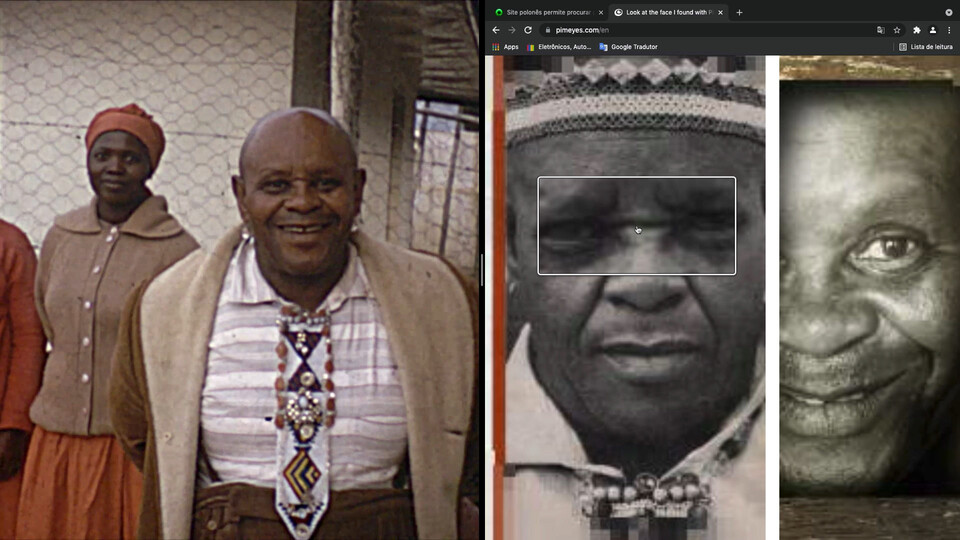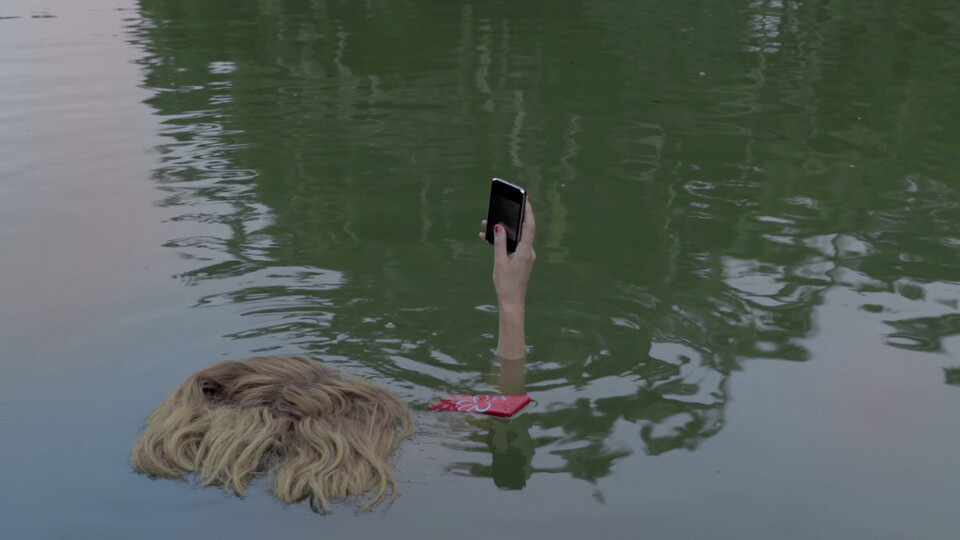A reanimation of days gone by
The nostalgic (re)construction of Vadim Kostrov’s former Umwelt in the film Fall.
“Memories… Memories… Image, sound, memories…”1)
In the introductory speech for the screening of his latest feature-length film Fall (2022) at FID Marseille, director Vadim Kostrov explained that in this title, which is intended to be therapeutic and relaxing for the audience, he is reminiscing about his childhood while at the same time reflecting on his own past. But make no mistake, the romantic locus amoenus, the idyllic “pleasant place” that emerges before our eyes, is most certainly not dripping with cheap autobiographical sentimentality. In this work, which is almost simplistic in its narrative, the twenty-four-year-old experimental filmmaker attempts to trace the contours of days gone by, letting only time and space speak instead of the characters. Thanks to his unconventional approach, these reminiscences and recollections of the first independent steps towards life raise issues examining many interfaces, such as subject x world, individual x collective, external x internal, and past x present. Thus, in this interpretive essay I will be addressing the issue, which arises from said interfaces, of the film’s reconnection with the space-time of the world once inhabited by the filmmaker.
To the eye of a nostalgic, the surrounding landscape always appears latently melancholic because, when observing it, he automatically preforms a relationship with it for future recollection; however, the landscape’s melancholic aspect undoubtedly reaches full bloom when it is wrapped in an autumnal garb. The brightly coloured trees are gradually overwhelmed by grey, frequent rain wets the heads of lonely pedestrians, and the unrelentingly red sunset, despite its beauty and promise of suffusing something liberating, contains a strange, hard-to-define harshness that seems to remind one of the reality of their existence in a world against which they remain utterly defenceless. It is then no coincidence that Kostrov chooses the autumn season for his nostalgic wandering. However, he removes the action from its coordinates, focusing instead on the constellations in which the action usually takes place and on the solitude and emptiness that fill the spaces between the action. The boy, who represents his younger self, strolls aimlessly through the city, the wilderness, and places combining elements of both of these areas, which are usually perceived as opposites. During his wanderings, the boy is humbly and patiently observed from afar by the camera, which mostly remains at one fixed point but frequently zooms in on various nooks of the mise-en-scène. Following the solitary child, we are brought to places with which the director has a strong personal connection as it is within their confines that he spent his childhood – after all, this is the town where he grew up. And if the autumnal landscape seems to us particularly melancholic, there are few places where its character stands out as strikingly as in the environs of a Russian housing estate full of dilapidated buildings. The atmosphere is intensified by, for example, the rusty climbing frames that outnumber the handful of lonely visitors to the playground or the war memorial in the form of a tank that looms ominously in the urban landscape.
In his introduction to Fall at FID Marseille, Kostrov said that this film focuses on the period when the world accepts a man and a man accepts the world, even before, in his words, “everything happens”. On a purely sensory level, the boy’s thrownness into the world is emphasised by the fact that, except for perhaps one single moment, he is always depicted in exteriors whose apparent boundlessness is accentuated by a significant depth of shot, and although the camera’s point of view is almost always fixed on him, at times it is as if the world, the boy’s companion, has actually taken the reins completely. For example, the very first shot of the film, several minutes long, shows a deserted and sleepy city fully immersed in smoke, which calmly rises towards the clouds. This scene is followed by a diverse assemblage of industrial bustle – the city speaking a language of its own – and it should be noted that the sound component of Fall forms a fascinating complement to the visuals throughout the duration of the film. The director’s work in this regard evokes one of Robert Bresson’s aphorisms, namely, “The noises must become music.”2) If the imagery of Fall often seems somewhat static and homogeneous, the diverse palette of sounds and bustle that accompanies it – not music in the traditional sense of the word but all manner of humming and vibrations – is by contrast always dynamic and heterogeneous, composed of numerous elements that mix together and create certain quasi-melodies and rhythms. It is interesting that their sources usually remain offscreen, and this impossibility of locating the originators in space contributes significantly to their markedly ethereal character. Thus, from points unknown, outside the boundaries of the frame, we hear, for example, fragments of someone’s conversation, the booming reverberations of music playing from a car, or oppressive and mysterious shrieks. All of this accompanies the boy from afar on his journey without a destination, the main attribute of which becomes a contemplative slowness – after all, what pace did childhood have if not a slow and protracted one?
When Kostrov speaks of interacting with the world during his childhood, it is necessary to remember that this is not so much an attack of the unknown as it is an ad hoc creation of the known. Thus, the German biologist Jakob von Uexküll’s concept of Umwelt may be helpful in understanding Kostrov’s efforts to reanimate the space-time of this stage of his own life. In his text “The Theory of Meaning”, Uexküll writes that although there is one comprehensive world that we all seemingly inhabit, it would be more appropriate to speak of an infinite number of simultaneously occurring subjective worlds, Umwelten, which are created on the level of meaning through individual animals’ signification of that comprehensive world. Although this comprehensive world is made up of the same components, their variable meaning is entirely dependent on their appropriation into the personal worlds of different creatures.3) Uexküll uses the example of the stem of a blooming meadow flower – its meaning in the Umwelt of the girl who wants to make a bouquet is quite different from that of the ant who uses it as a path to reach food among the petals.4) Kostrov similarly covered the world in a network of meanings during his childhood and by doing so created his individual Umwelt. The places he presents to us have a specific semantic status for him, which is, however, completely incommunicable to others. As Martin Charvát writes in his book Gilles Deleuze: Asignifikantní sémiotika [Gilles Deleuze: Asignifying semiotics]: “[…] nothing exists outside of the individual subjective experiences that create a meaningful Umwelt.”5) So on the one hand, in Kostrov’s film we see the same thing he does, while on the other hand, we see something completely different – something foreign to him but personal to us. Thus, through purely optical and acoustic situations, Kostrov primarily conveys to us an atmosphere, and we can only guess at the meanings hidden somewhere beyond the limits of the author’s subject.
His choice to work entirely without the spoken word in the film is particularly significant in this respect because the communication of the “sides of language” becomes strikingly transparent as we enter Kostrov’s former Umwelt. In fact, we decode the situations on a purely sensory level: guided by intuition and our own experience, we can fully connect to the plot that is absent from the scenes of Fall, thus avoiding the barriers created by culture and language in other works. For example, the roughly twelve-minute-long shot of a boy sitting on a rock and looking out towards nature seems universally plausible, even without seeing into his mind. In this context, we can recall Jonas Mekas’s words from his cinematic opus As I Was Moving Ahead Occasionally I Saw Brief Glimpses of Beauty. In one voiceover, Mekas laments that the footage of his friends and family that he has captured over the years holds great significance for him, yet this significance may be completely lost on the viewer. But he suddenly realises that our lives are very similar – the things Mekas has experienced and filmed are not so different from what other people have experienced, and above all, in his words, “There is no image, really, that wouldn’t relate to anybody else.” Thus, even in the case of Fall, another person’s nostalgia becomes, to a certain extent, an implementable quantity that can be felt through one’s own experience and empathy, even if it is difficult to grasp intelligibly.
As you can see, Uexküll’s concept of Umwelt emphasises subjective signification, and because of this, it can seem almost solipsistic, bringing to mind Ludwig Wittgenstein’s maxims from the Tractatus Logico-Philosophicus: “The world and life are one,”6) and “I am my world. (The microcosm.)”7) But how else can we characterize the endeavour to reanimate the space-time of one’s own childhood other than as purely solipsistic? Because no matter how much Kostrov stages shots that are meant to draw us into the early years of his life or works with an actor representing his younger self, the past is not and cannot be present. The city has changed over the years, and so Kostrov relates more to his memories, with which he is as alone in the context of his own consciousness as a man is always alone with his dreams, for example, or as Kostrov’s younger self is alone with the world in Fall. In this reanimation, he looks more into his own interior than into the viewfinder of the camera, which, to some extent, helps to transpose the present but not to replicate the past. The days gone by are gone for good, as is the structure of Vadim Kostrov’s Umwelt from that time. The city’s current form thus serves him more as a frame of reference, to which he seems to relate through the camera almost secondarily, whereas the central source from which Fall draws as a work of art consists in Kostrov’s own memories – what has stuck with him in the form of abstract residues and impressions. Here the thought of Czech aesthetician Vlastimil Zuska might help us. In his book Kruté světlo, krásný stín: Estetika a film [Harsh light, beautiful shadow: Aesthetics and film], Zuska, building on the ideas of Jan Patočka, perceives the subjective styles of painters who aren’t mimetic with regards to to exterior reality as mimesis of their interior worlds.8) Although film usually records fragments of reality more accurately than the hand of a painter, the idea of the filmmaker as a creator of microcosms whose work springs entirely from the realm of the artist’s impenetrable interior may seem somewhat surprising. However, one must take into account Gilles Deleuze’s assumption from his book Cinema 1: The Movement-Image: “[…] the cinematic image is always deterritorialised […].”9) In other words, the shot always loses contact with reality and functions as an autonomous unit. Thus, throughout Fall we can observe, for example, certain ruptures or derealising incursions in which the illusion of the mimesis of the external world collapses in favour of the association of the internal world. The seemingly documentary modus implied by the subtle shots taken in real life which don’t tell a fictional story is at times disrupted by a kind of memory effect – the disintegration of what is seen during the attempt to capture and integrate it. The image begins to double into two layers, at times blurring or going out of focus. It is not a spectacular subversion but rather a relatively subtle and minimalist way of working with the “collapse” of the reality in front of the camera, which changes just as its form in the artist’s memory has been transformed by the influence of time.
In this interpretive essay, I have addressed the issues of Vadim Kostrov’s cinematic (re)construction of his own childhood moments. After describing the audio and visual components of his film Fall, we moved on to Jakob von Uexküll’s concept of Umwelt, which helped us to grasp the world as a purely individual and meaningful structure fully dependent on a particular subject. In Fall, sounds and images speak in lieu of language, and so it is not so much the viewer’s reason but rather their feelings and impressions that become the gateway to this intimate zone of Kostrov’s former Umwelt. Moreover, the nostalgic scenes presented in the film turn out to be only partially mimetic of the reality against whose “backdrop” Kostrov shot them. In the case of Fall, a certain mimesis of the inner world manifests itself as a distinctive element – a mimesis of memories of the former structure of Kostrov’s Umwelt subordinated to the author’s point of view, here obscured by the effect of memory, of reminiscence.
---
Notes
1) Jonas Mekas. As I Was Moving Ahead Occasionally I Saw Brief Glimpses of Beauty, 2000.
2) BRESSON, Robert. Notes on Cinematography. New York: Urizen Books 1977, p. 10.
3) UEXKÜLL, “The Theory of Meaning”. In: Semiotica 42, no. 1. Mouton 1982, p. 26–30.
4) Ibid., p. 29–30.
5) CHARVÁT, Martin. Gilles Deleuze. Asignifikantní sémiotika. Prague: Togga 2016, p. 165.
6) WITTGENSTEIN, Ludwig. Tractatus logico-philosophicus. London: Kegan Paul, Trench, Trubner & Co. 1922, p. 74.
7) Ibid., p. 74.
8) ZUSKA, Vlastimil. Kruté světlo, krásný stín: Estetika a film. Prague: Univerzita Karlova v Praze, Filozofická fakulta 2010, p. 18–19.
9) DELEUZE, Gilles. Cinema 1: The Movement-Image. Minneapolis: University of Minnesota Press 1997, p. 96.
This article is a result of the project Media and documentary 2.0, supported by EEA and Norway Grants 2014–2021.

